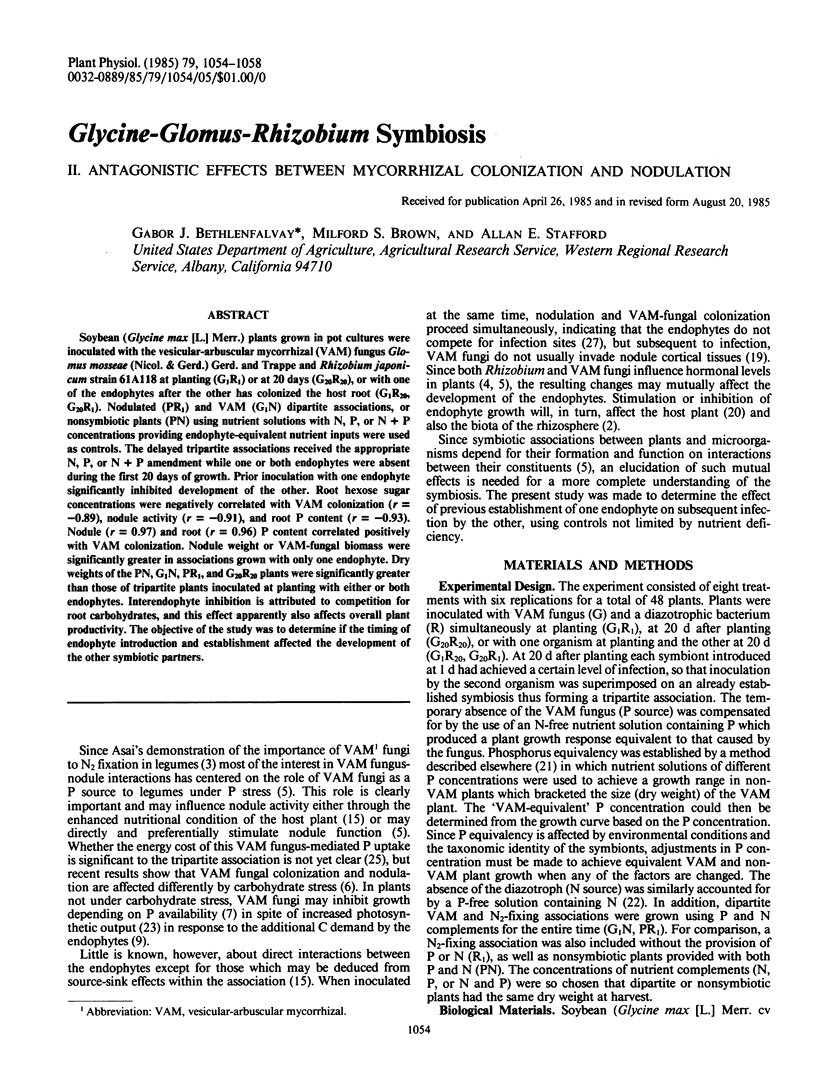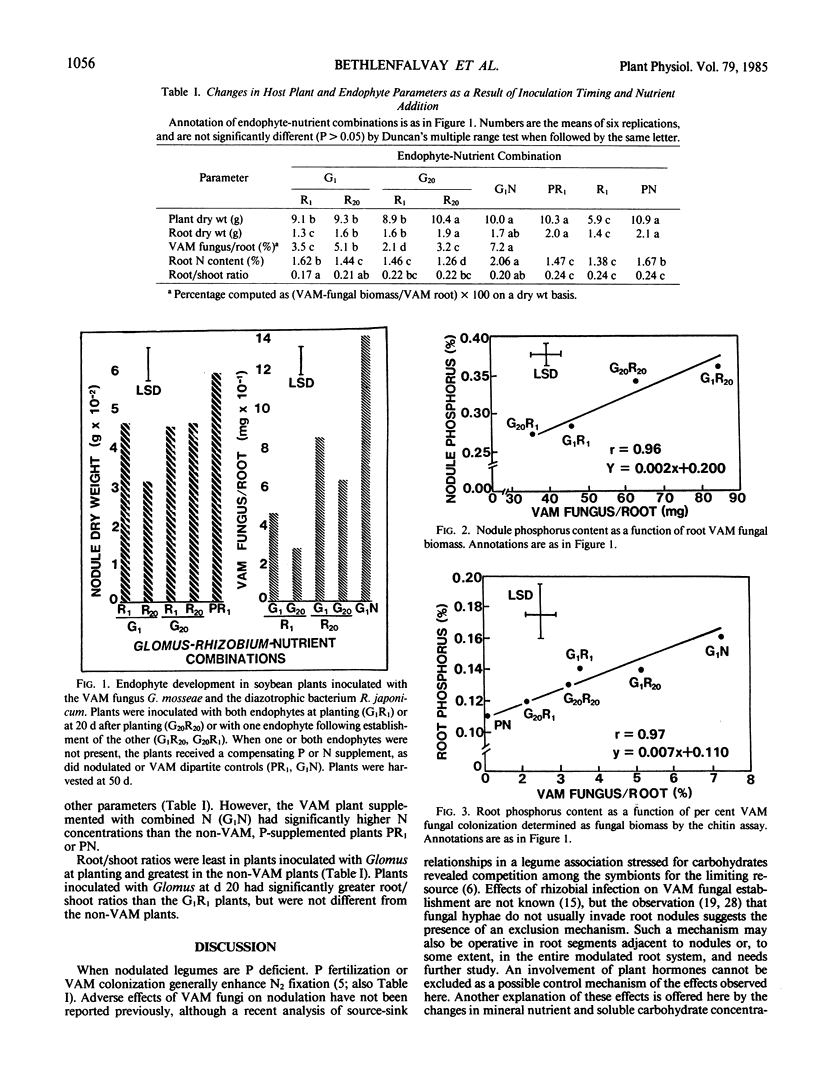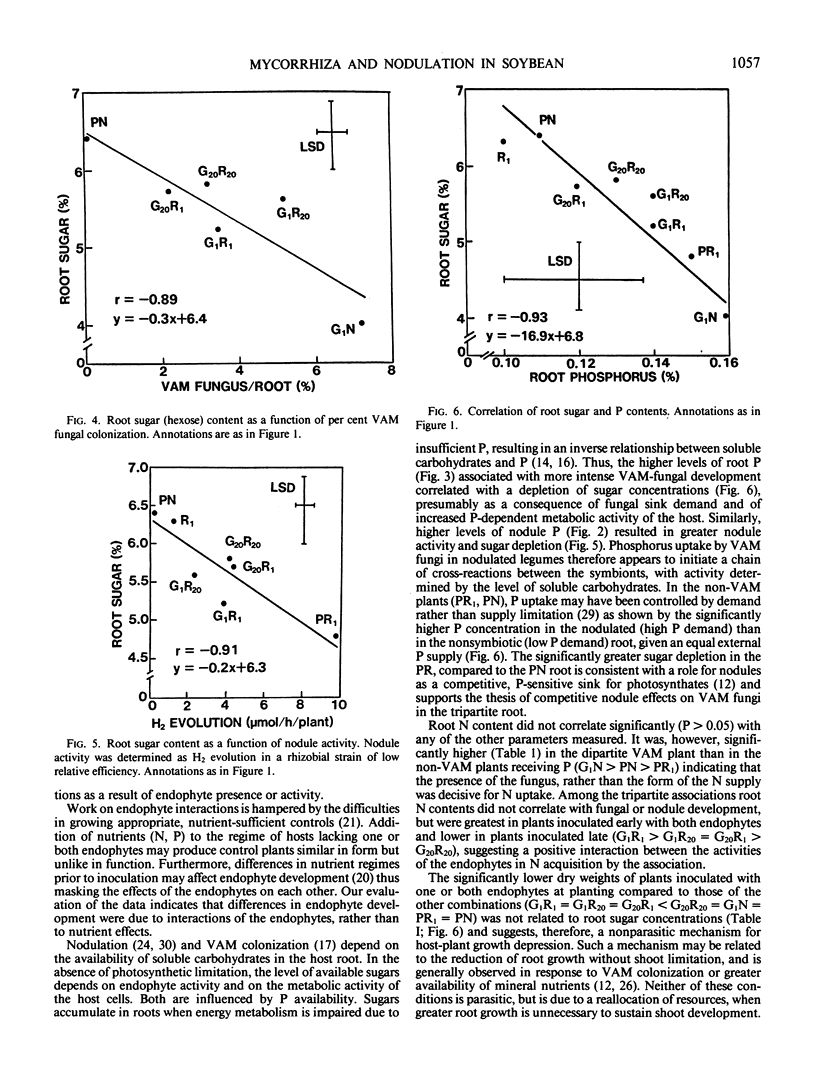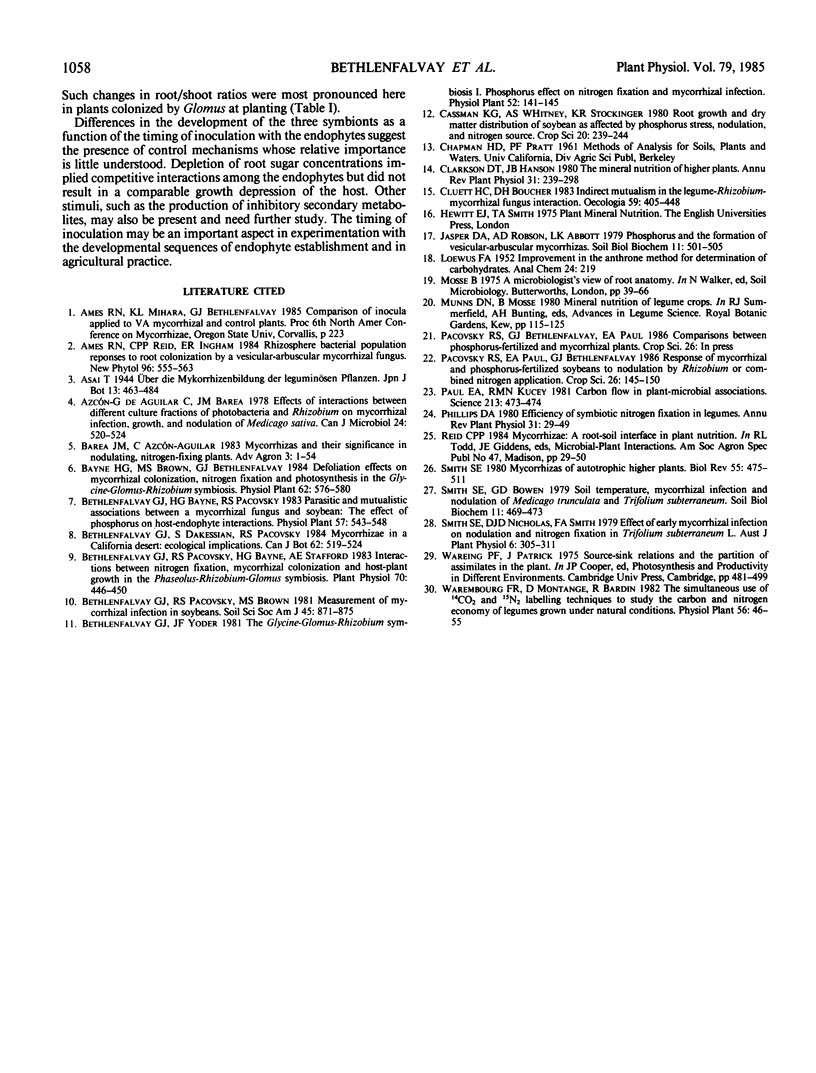Abstract
Soybean (Glycine max [L.] Merr.) plants grown in pot cultures were inoculated with the vesicular-arbuscular mycorrhizal (VAM) fungus Glomus mosseae (Nicol. & Gerd.) Gerd. and Trappe and Rhizobium japonicum strain 61A118 at planting (G1R1) or at 20 days (G20R20), or with one of the endophytes after the other has colonized the host root (G1R20, G20R1). Nodulated (PR1) and VAM (G1N) dipartite associations, or nonsymbiotic plants (PN) using nutrient solutions with N, P, or N + P concentrations providing endophyte-equivalent nutrient inputs were used as controls. The delayed tripartite associations received the appropriate N, P, or N + P amendment while one or both endophytes were absent during the first 20 days of growth. Prior inoculation with one endophyte significantly inhibited development of the other. Root hexose sugar concentrations were negatively correlated with VAM colonization (r = −0.89), nodule activity (r = −0.91), and root P content (r = −0.93). Nodule (r = 0.97) and root (r = 0.96) P content correlated positively with VAM colonization. Nodule weight or VAM-fungal biomass were significantly greater in associations grown with only one endophyte. Dry weights of the PN, G1N, PR1, and G20R20 plants were significantly greater than those of tripartite plants inoculated at planting with either or both endophytes. Interendophyte inhibition is attributed to competition for root carbohydrates, and this effect apparently also affects overall plant productivity. The objective of the study was to determine if the timing of endophyte introduction and establishment affected the development of the other symbiotic partners.
Full text
PDF




Selected References
These references are in PubMed. This may not be the complete list of references from this article.
- Bethlenfalvay G. J., Pacovsky R. S., Bayne H. G., Stafford A. E. Interactions between Nitrogen Fixation, Mycorrhizal Colonization, and Host-Plant Growth in the Phaseolus-Rhizobium-Glomus Symbiosis. Plant Physiol. 1982 Aug;70(2):446–450. doi: 10.1104/pp.70.2.446. [DOI] [PMC free article] [PubMed] [Google Scholar]
- Lang F., Quehenberger P., Greger R., Silbernagl S., Stockinger P. Evidence for a bicarbonate leak in the proximal tubule of the rat kidney. Pflugers Arch. 1980 Aug;386(3):239–244. doi: 10.1007/BF00587474. [DOI] [PubMed] [Google Scholar]
- Paul E. A., Kucey R. M. Carbon flow in plant microbial associations. Science. 1981 Jul 24;213(4506):473–474. doi: 10.1126/science.213.4506.473. [DOI] [PubMed] [Google Scholar]
- Scharf S. M., Bianco J. A., Tow D. E., Brown R. The effects of large negative intrathoracic pressure on left ventricular function in patients with coronary artery disease. Circulation. 1981 Apr;63(4):871–875. doi: 10.1161/01.cir.63.4.871. [DOI] [PubMed] [Google Scholar]
- de Aguilar C. A., Barea J. M. Effects of interactions between different culture fractions of 'phosphobacteria' and Rhizobium on mycorrhizal infection, growth, and nodulation of Medicago sativa. Can J Microbiol. 1978 May;24(5):520–524. doi: 10.1139/m78-085. [DOI] [PubMed] [Google Scholar]


